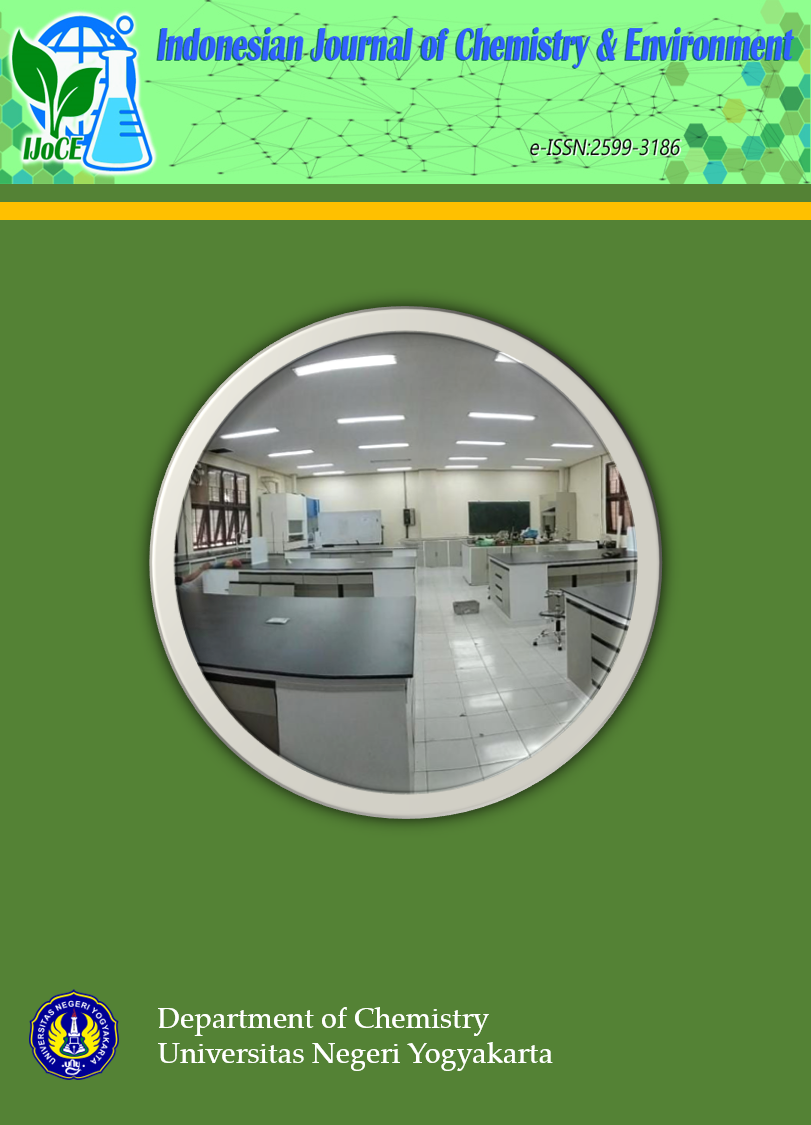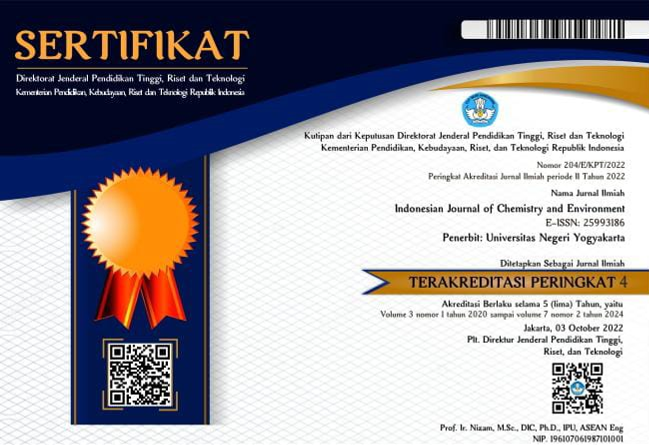Chemistry and Biology of Cyanides: A Literature Review
DOI:
https://doi.org/10.21831/ijoce.v6i2.67030Abstract
The term cyanide is used to describe compounds that contain the cyano, -C≡N, group. The cyanides exist in nature as inorganic as well as organic compounds in the forms of gas or liquid such as HCN, CNCl and acetonitrile, or solids such as NaCN, KCN, and Ca(CN)2. Cyanide compounds are also found in addible plants as cyanogenic glycosides. Compounds that can release cyanide are known as cyanogenic compounds. HCN has a low boiling point (25.63 oC) and is as weakly acidic with a pKa 9.2. It partially ionizes in water to give the cyanide anion, -CN. Cyanide ion from salt reacts with acid to give HCN, but at high pH (8-10), it remains as cyanide ion even if the temperature of the water is 80.0-100.0 °C. Cyanide is one of the deadliest poisons, LC50 is 1.1 and <5.0 mg/kg for HCN and NaCN, which can cause death to those who come into contact within a few minutes or hours of exposure, depending on the level and route of exposure. It is a rapidly acting, potentially deadly chemical that interferes with the body's ability to use oxygen. Due to its toxicity, cyanide has many roles in industry such as pesticides and medicines as nitrile-containing pharmaceuticals. Organic compounds that have a −C≡N functional group are called nitriles. Over 30 nitrile-containing pharmaceuticals are currently marketed for a diverse variety of medicinal indications with more than 20 additional nitrile-containing leads in clinical development. In addition, over 120 naturally occurring nitriles have been isolated from terrestrial and marine sources. In plants, cyanides are usually bound to sugar molecules in the form of cyanogenic glycosides. Hydrogen cyanide can be released from hydrolysis of cyanogenic glycosides which are commonly present in edible plants. Because it is a relatively common toxin in the environment, the body can detoxify a small amount of cyanide. The major route of metabolism for cyanides is detoxification in the liver by the mitochondrial enzyme rhodanese, which catalyzes the transfer of the sulfane sulfur of thiosulfate to the cyanide ion to form thiocyanate. Ingested cyanide may be countered by administering antidotes, such as natural vitamin B12 and sodium thiosulfate, that detoxify cyanide or bind to it.
Downloads
Published
2023-12-06
How to Cite
[1]
Muderawan, I.W. et al. 2023. Chemistry and Biology of Cyanides: A Literature Review. Indonesian Journal of Chemistry and Environment. 6, 2 (Dec. 2023), 63–82. DOI:https://doi.org/10.21831/ijoce.v6i2.67030.
Issue
Section
Articles
Citation Check
License
Authors who publish with this journal agree to the following terms:
- Authors retain copyright under a Creative Commons Attribution–ShareAlike License (CC BY SA) that allows others to share: copy, and redistribute the material in any medium or format, Adapt: remix, transform, and build upon the material, for any purpose, even commercially.
- Authors are able to enter into separate, additional contractual arrangements for the non-exclusive distribution of the journal's published version of the work (e.g., post it to an institutional repository or publish it in a book), with an acknowledgement of its initial publication in this journal.
- Authors are permitted and encouraged to post their work online (e.g., in institutional repositories or on their website) prior to and during the submission process, as it can lead to productive exchanges, as well as earlier and greater citation of published work.










